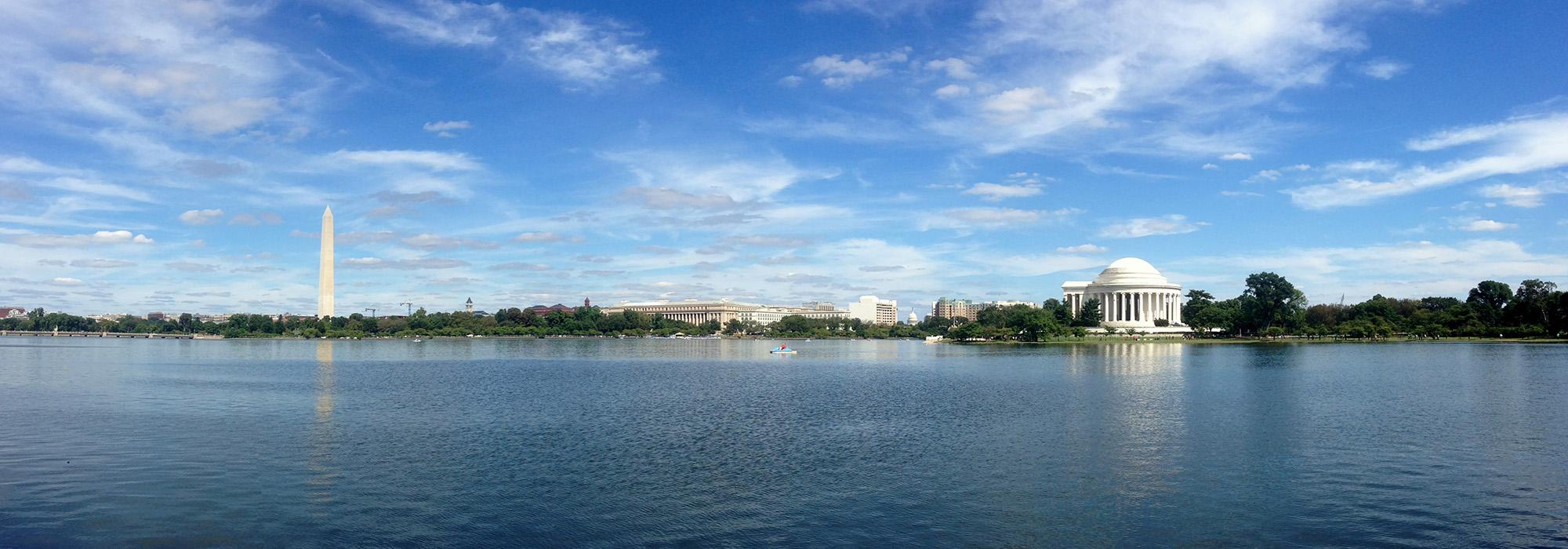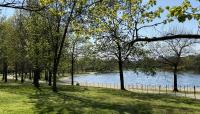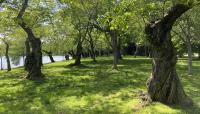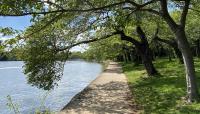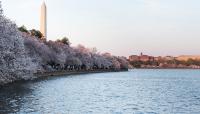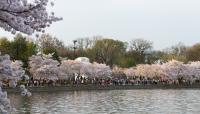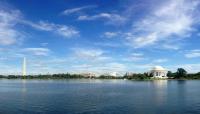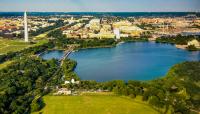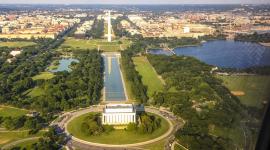Landscape Information
Initially called Twining Lake, this 107-acre body of water was constructed by the U.S. Army Corps of Engineers between 1882 and 1897 to dispel sediment from the Washington Channel. In 1902 the Senate Park Commission’s McMillan Plan, created in part by Frederick Law Olmsted, Jr., and Daniel Burnham, re-imagined the Tidal Basin and its surrounding fill lands as recreational space, resulting in the creation of East and West Potomac Parks. In 1910, on the initiative of First Lady Helen Taft, some 3,000 cherry trees donated by the Japanese government were planted around the Tidal Basin by landscape architect George Burnap. An additional 3,800 cherry trees were planted in 1969 around Haines Point in East Potomac Park as part of First Lady “Lady Bird” Johnson’s national beautification program.
The quatrefoil-shaped Tidal Basin stores some 250 million gallons of water daily between the Potomac River and the Washington Channel. The stone seawalls that line the basin are topped by aggregate paths that provide views of West Potomac Park. Framing the basin are massings of cherry trees along grassy banks. Overlooking the shoreline is the Thomas Jefferson Memorial, designed by John Russell Pope and Frederick Law Olmsted, Jr., on the site of a short-lived whites-only bathing beach; the Franklin Delano Roosevelt Memorial, designed by Lawrence Halprin & Associates (1997); the Martin Luther King Jr. Memorial by artist Lei Yixin and ROMA Design Group (2011); and the George Mason Memorial designed by landscape architecture firm Rhodeside & Harwell with sculptor Wendy Moss (2002). Spanning the pool’s northern and southwestern lobe, respectively, is the Kutz Memorial Bridge, designed in 1941 by architect Paul Cret, and the Tidal Basin Bridge, created by engineering firm Alexander & Repass. East of the Kutz Memorial Bridge is the Floral Library, a quarter-acre a seasonal floral display designed by National Park Service landscape architect Darwina Neal in 1969. In 2019 the Trust for the National Mall, the National Trust for Historic Preservation, and the National Park Service launched the Save the Tidal Basin initiative to mitigate the threat of rising sea levels.



